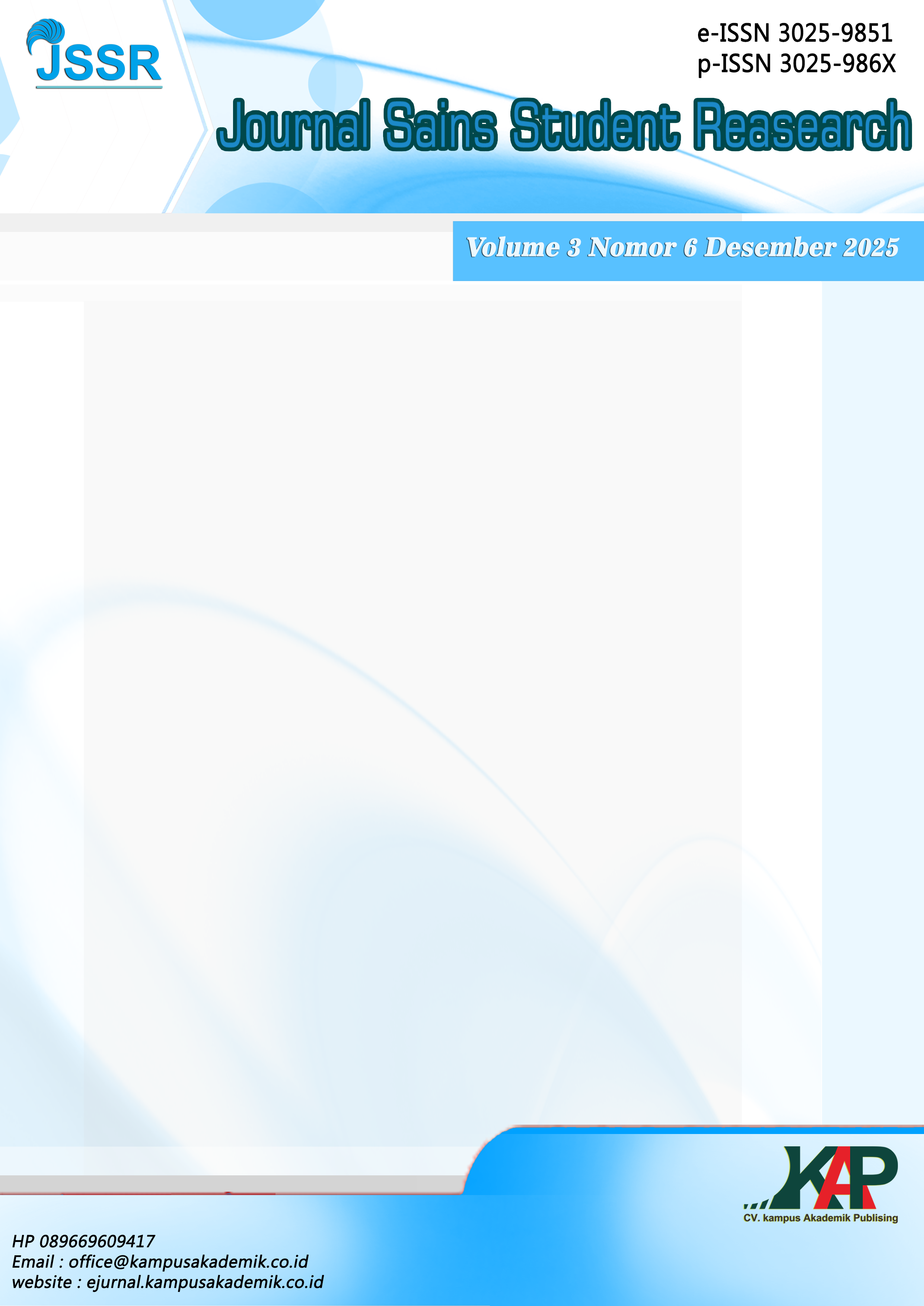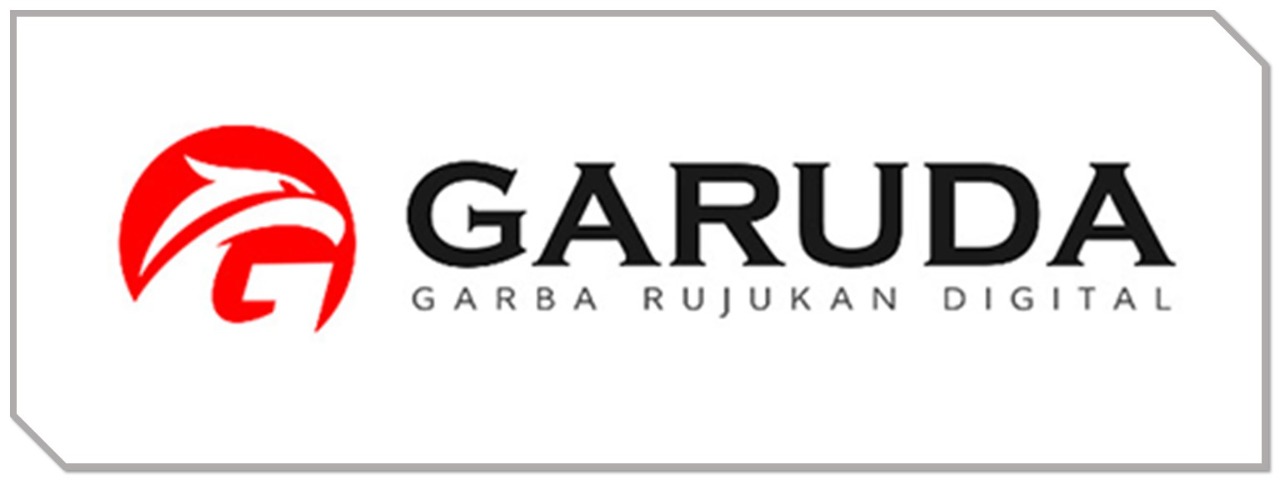Pengaruh Pelarut Ekstraksi terhadap Aktivitas Antioksidan Ekstrak Sawi Hijau (Brassica juncea L.)
DOI:
https://doi.org/10.61722/jssr.v3i6.6872Keywords:
Mustard greens, solvent variations, antioxidants, DPPH.Abstract
This study aims to determine the effect of different extraction solvents (n-hexane, ethyl acetate, and ethanol) on the antioxidant activity of mustard green (Brassica juncea L.) extracts. The extraction was carried out using the maceration method with different solvent polarities, and the concentrated extracts were tested for phytochemical screening and antioxidant activity using the DPPH method. The IC₅₀ values were analyzed using one-way ANOVA, resulting in a significance value of 0.000 (p < 0.05), indicating that the type of solvent significantly affected antioxidant activity. Phytochemical analysis revealed the presence of flavonoids, phenols, tannins, saponins, alkaloids, and steroids. The average IC₅₀ values of n-hexane, ethyl acetate, and ethanol extracts were 314.73±4.96 ppm (weak), 412.29±3.06 ppm (weak), and 40.46±0.63 ppm (very strong), respectively. These results indicate that solvent polarity variations significantly influence the antioxidant activity of mustard green extracts.
References
Artati, N. (2023). Peranan antioksidan alami dalam menangkal radikal bebas pada tubuh manusia. Jurnal Sains dan Kesehatan, 7(2), 112–120.
Bahar, M. (2025). Pentingnya pola makan bergizi seimbang dalam menjaga sistem kekebalan tubuh. Jurnal Gizi dan Kesehatan Masyarakat, 10(1), 25–33.
Blois, M. S. (1958). Antioxidant determinations by the use of a stable free radical. Nature, 181(4617), 1199–1200. https://doi.org/10.1038/1811199a0
Halauddin, A. (2017). Kajian botani dan manfaat tanaman sawi hijau (Brassica juncea L.) sebagai bahan pangan dan obat tradisional. Jurnal Biologi Tropika, 15(1), 45–53.
Herlianty, D. (2024). Peranan sayuran sebagai sumber serat, vitamin, dan mineral bagi kesehatan tubuh. Jurnal Ilmu Pangan dan Kesehatan, 9(2), 78–86.
Hidayah, N. (2016). Metode ekstraksi dan pengaruh jenis pelarut terhadap hasil ekstraksi senyawa bioaktif tanaman obat. Jurnal Fitokimia Indonesia, 3(1), 1–10.
Huang, Y. (2022). Glucosinolate content and its health benefits in Brassica juncea varieties. Journal of Food Biochemistry, 46(5), e14123. https://doi.org/10.1111/jfbc.14123
Jafaruddin, M. (2023). Kandungan gizi sayuran dan manfaatnya terhadap kesehatan. Jurnal Gizi Sehat Indonesia, 8(3), 214–222.
Jannah, R. (2024). Uji aktivitas antioksidan fraksi etil asetat sawi ladang (Nasturtium montanum W.) dengan metode DPPH. Jurnal Fitofarmaka Indonesia, 12(1), 34–40.
Khotimah, N. (2020). Pemanfaatan tanaman sawi hijau (Brassica juncea L.) sebagai obat tradisional untuk hipertensi dan anemia. Jurnal Kesehatan Herbal, 5(2), 65–73.
Molyneux, P. (2004). The use of the stable free radical DPPH for estimating antioxidant activity. Songklanakarin Journal of Science and Technology, 26(2), 211–219.
Sari, A. P. (2023). Kandungan pigmen dan aktivitas antioksidan pada sayuran hijau lokal Indonesia. Jurnal Bioteknologi dan Pangan, 11(4), 302–310.
Sari, L. M. (2024). Analisis kandungan gizi dan serat pada sawi hijau (Brassica juncea L.) sebagai bahan pangan fungsional. Jurnal Teknologi Pangan, 6(1), 55–62.
Seli, N. (2019). Identifikasi senyawa metabolit sekunder pada sawi putih (Brassica chinensis L.) dan potensi farmakologinya. Jurnal Kimia Terapan, 5(2), 89–96.
Verma, R., Singh, P., & Sharma, V. (2022). Phytochemical screening and antioxidant potential of Brassica juncea leaves extract. International Journal of Pharmaceutical Sciences and Research, 13(10), 4012–4018. https://doi.org/10.13040/IJPSR.0975-8232.13(10).4012-4018
Downloads
Published
Issue
Section
License
Copyright (c) 2025 JOURNAL SAINS STUDENT RESEARCH

This work is licensed under a Creative Commons Attribution-ShareAlike 4.0 International License.













